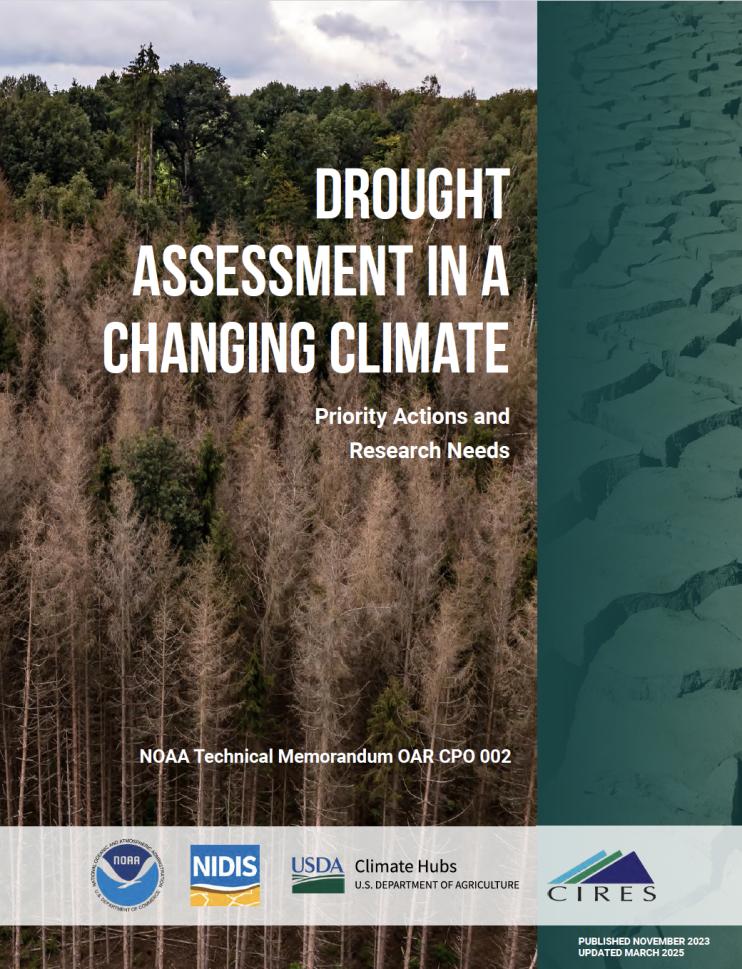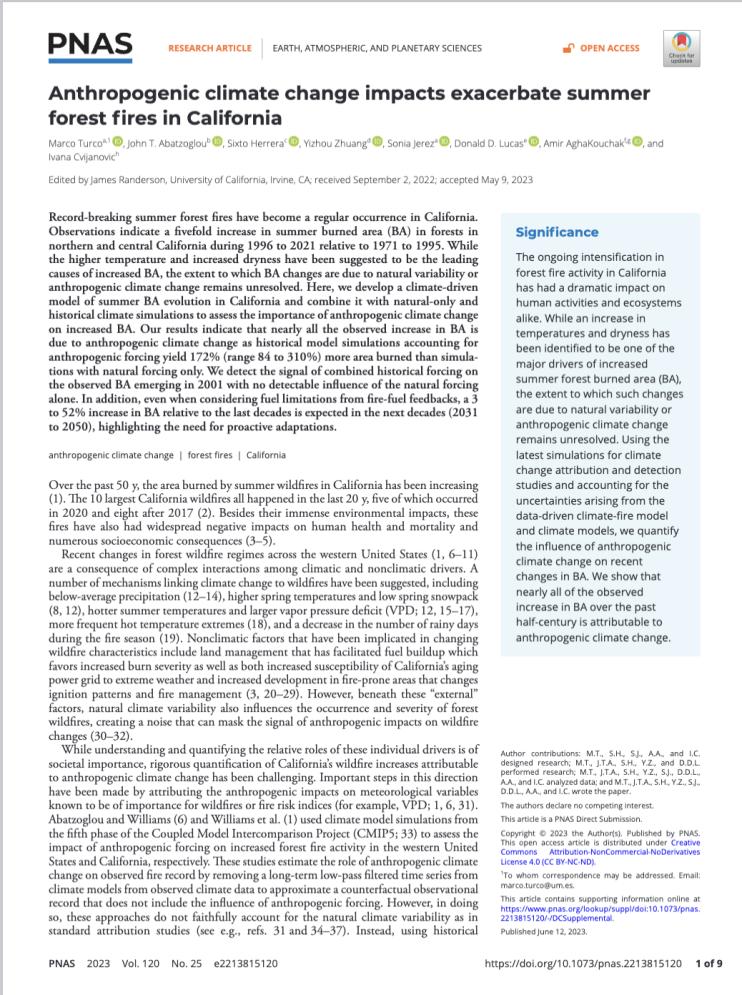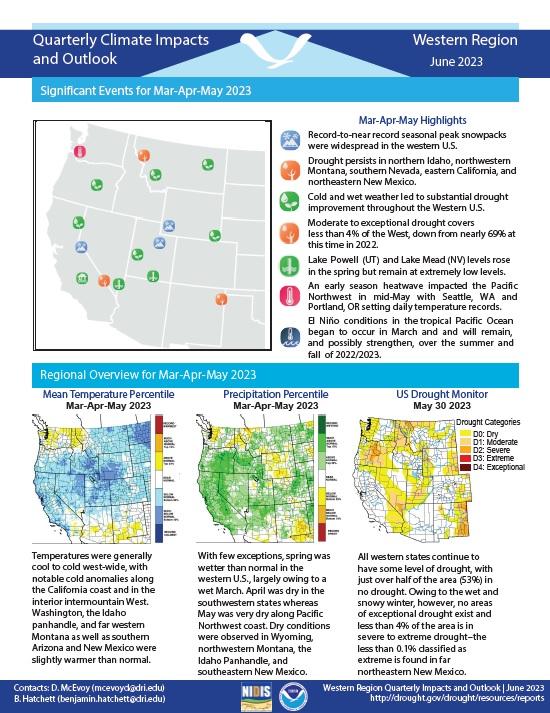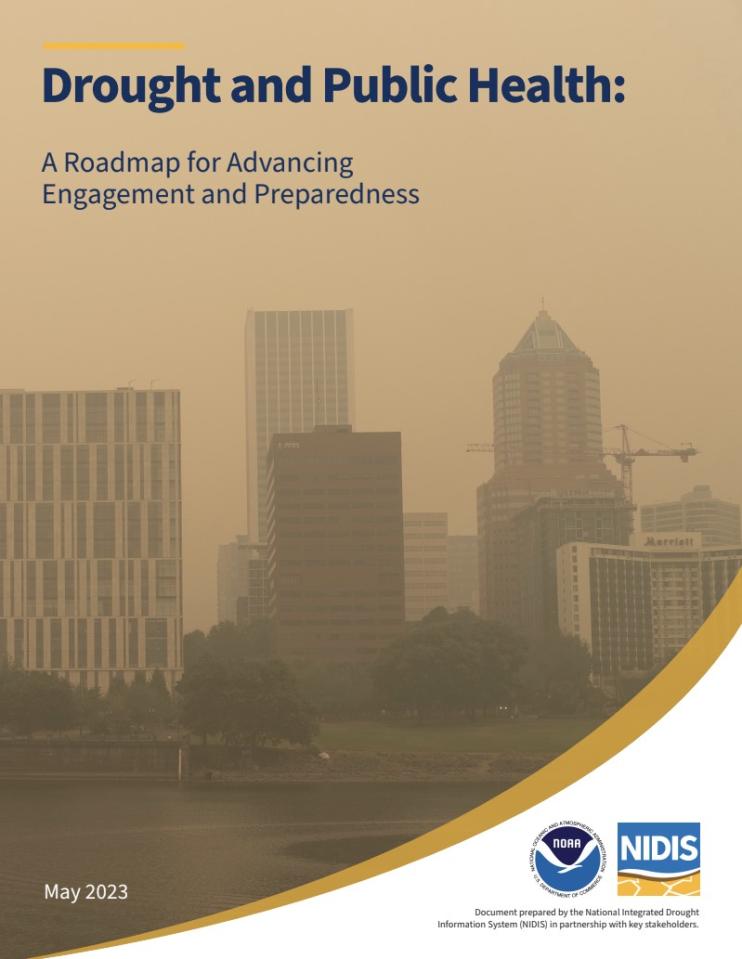In a changing climate, the intensity, duration, and frequency of droughts may change. This poses new challenges for drought assessment. Current methods for assessing drought conditions do not consistently and deliberately consider drought in the context of climate change, thereby unintentionally promoting drought response strategies that are limited in building long-term resilience in a changing climate.
Quarterly Climate Impacts and Outlook for the Western Region for June–August 2023. Dated September 2023.
Temperatures were above normal across the Pacific Northwest and much of the Southwest. New Mexico, Washington, and Oregon had their third, fifth, and seventh warmest summer on record, respectively. Remnants of Hurricane Hilary brought heavy rainfall to southern California and the Great Basin in mid-August and contributed to much-above-normal total summer precipitation across the region.
This article in Earth, Atmospheric, and Planetary Sciences was the result of NIDIS-supported research. Learn more about this research.
Quarterly Climate Impacts and Outlook for the Western Region for March–May 2023. Dated June 2023.
Temperatures were generally cool to cold west-wide, with notable cold anomalies along the California coast and in the interior Intermountain West. With few exceptions, spring was wetter than normal in the western U.S., largely owing to a wet March.
Drought is one of the costliest and deadliest climate-related disasters in the United States, necessitating public health engagement at a national level. Although drought is not typically thought of as a health hazard, the pathways to human health outcomes are prevalent and numerous. To better understand these pathways, and actions that could be taken to reduce health impacts associated with drought, NOAA’s National Integrated Drought Information System (NIDIS) supported the first comprehensive assessment of drought and health.









